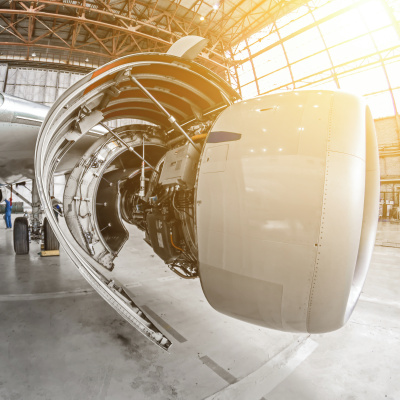You may wish to consider our Air Transport Management MSc, Airport Planning and Management MSc, Aerospace Manufacturing MSc or Airworthiness MSc (part-time only), which offer similar areas of study.
Discover other opportunities through our course finder.
As more intelligent and conscious aircraft enter service, aircraft and support systems are also becoming more intelligent. The future of aviation increasingly points towards electric and hydrogen-powered technologies, autonomous flying taxis and space commercialisation. These new realities will require leaders with digital skills to innovate solutions towards sustainability and efficiency in aviation. The MSc in Aviation Digital Technology Management developed professionals with the ability to innovate and apply digital technology in the aerospace industry. The course gave graduates from aeronautical and engineering backgrounds the digital skills and capabilities required to develop a career that goes beyond design and manufacture, and opened up wider aviation industry opportunities.
Who was it for?
This course was applicable to a broad range of applicants with backgrounds from aerospace, engineering, maths, physics and computing to experienced professionals looking to gain new skills in the area of digital aviation technology.
The course was also a route for non-aerospace engineering and computing graduates who aspire to enter the aviation industry. In addition, the course was a career development path for aerospace industry professionals to boost their digital and innovation skills.
Your career
Industry-led education makes Cranfield graduates some of the most desirable all over the world for recruitment by both global primes to smaller innovative start-ups looking for the brightest talent.
Graduates of the course should find engineering and management opportunities in the aviation ecosystem, including operators, maintenance organisations, financiers, airports and future spaceport operators.
Graduates will be equipped with the advanced skills which could be applied to the aviation, air traffic, air transport, security, defence, and aerospace industries. This approach offers you a wide range of career choices in current and emerging roles. Others decide to continue their education through PhD studies available within Cranfield University or elsewhere.
Cranfield’s Career Service is dedicated to helping you meet your career aspirations. You will have access to career coaching and advice, CV development, interview practice, access to hundreds of available jobs via our Symplicity platform and opportunities to meet recruiting employers at our careers fairs. Our strong reputation and links with potential employers provide you with outstanding opportunities to secure interesting jobs and develop successful careers. Support continues after graduation and as a Cranfield alumnus, you have free life-long access to a range of career resources to help you continue your education and enhance your career.
Read our blog post: Is a career in digital aviation right for you?




